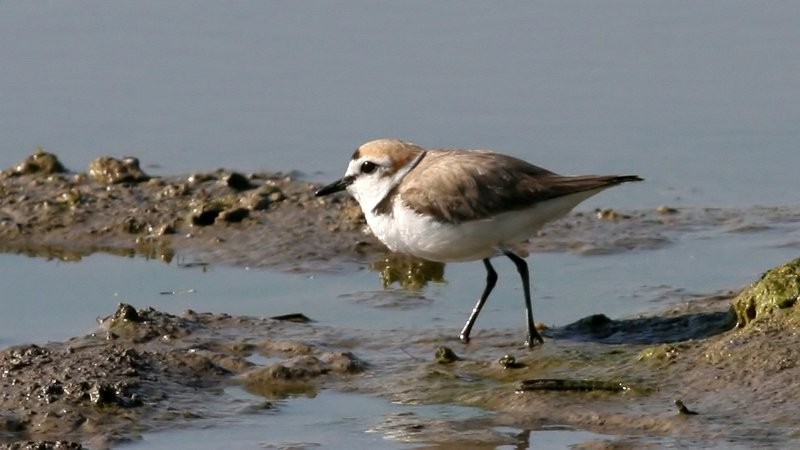Kentish Plover
A species of Typical plovers Scientific name : Charadrius alexandrinus Genus : Typical plovers
Kentish Plover, A species of Typical plovers
Botanical name: Charadrius alexandrinus
Genus: Typical plovers
Content
Description People often ask General Info
 Photo By Ken Billington , used under CC-BY-SA-3.0 /Cropped and compressed from original
Photo By Ken Billington , used under CC-BY-SA-3.0 /Cropped and compressed from original Description
The kentish Plover is a small shorebird found along sandy beaches and marshes. Its unique appearance includes a black band across its forehead, a pale underbelly, and a dark bill. This bird feeds on small crustaceans and insects, and can often be seen darting along the shoreline in search of food. During the breeding season, the Kentish Plover engages in intricate courtship displays and raises its young on sandy beaches. 
Size
18 cm
Colors
Brown
Black
Gray
White
Life Expectancy
10 years
Nest Placement
Ground
Feeding Habits
Kentish Plover primarily eat minute aquatic and terrestrial invertebrates, engaging in visual foraging along shores. They exhibit unique behaviors of probing sand and catching prey mid-air, with adaptations allowing efficient nocturnal feeding.
Habitat
Kentish Plover inhabit coastal environments, favoring seaward beach margins, tidal flats, and salt pans with sparse vegetation, conducive to their ground-nesting habits. Their habitats span broad oceanic shores and adjacent inland saline waters, preferring non-vegetated substrates like shingle and sand spits. Occasionally, kentish Plover may adapt to human-made environments, such as gravel pits and reservoirs.
Dite type
Insectivorous
People often ask
General Info
Feeding Habits
Bird food type
Distribution Area
Kentish plovers have an extremely wide geographical distribution and their habitats vary not just spatially but environmentally too. They are known to reside and breed in multiple types of habitat, from desert with ground temperatures reaching 50 °C to tundra. The distribution of this species’ breeding areas covers Europe, Asia and Africa,). In Europe, populations are typically found in the west; although there was once a breeding population in Hungary, Kentish plovers no longer breed there. In Africa, populations are found on the southern coast of Senegal and along the Northern coast of the Mediterranean, and the Red Sea coast. The breeding area continues along the Arabian Peninsula, Saudi Arabia, Qatar, and Bahrain in the Middle East. Small populations can be found on islands too, such as the Cape Verde archipelago, the Canary Islands, and the Azores. It is a rare vagrant in Australia.Some populations do not migrate, such as the Maio (Cape Verde) population, however other populations can migrate reasonable distances, for example, plovers that spend winter in North Africa have been known to migrate to Turkey and Greece in the spring. Some birds breeding in western Europe are not known to travel very far, just within Europe, however some do travel, mainly to Western Africa. 
Species Status
Not globally threatened.
Scientific Classification
Phylum
Chordates Class
Birds Order
Shorebirds Family
Plovers Genus
Typical plovers Species
Kentish Plover